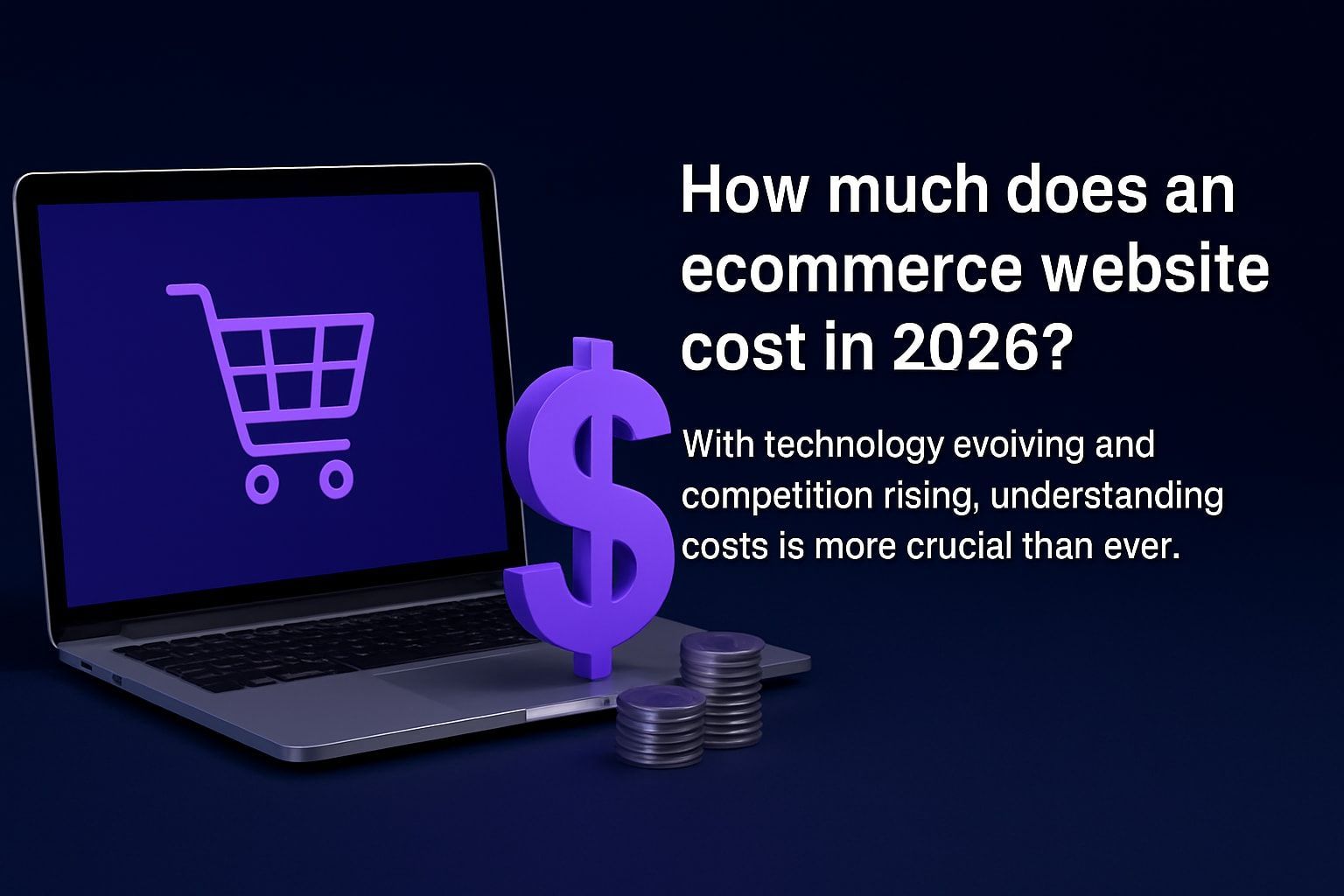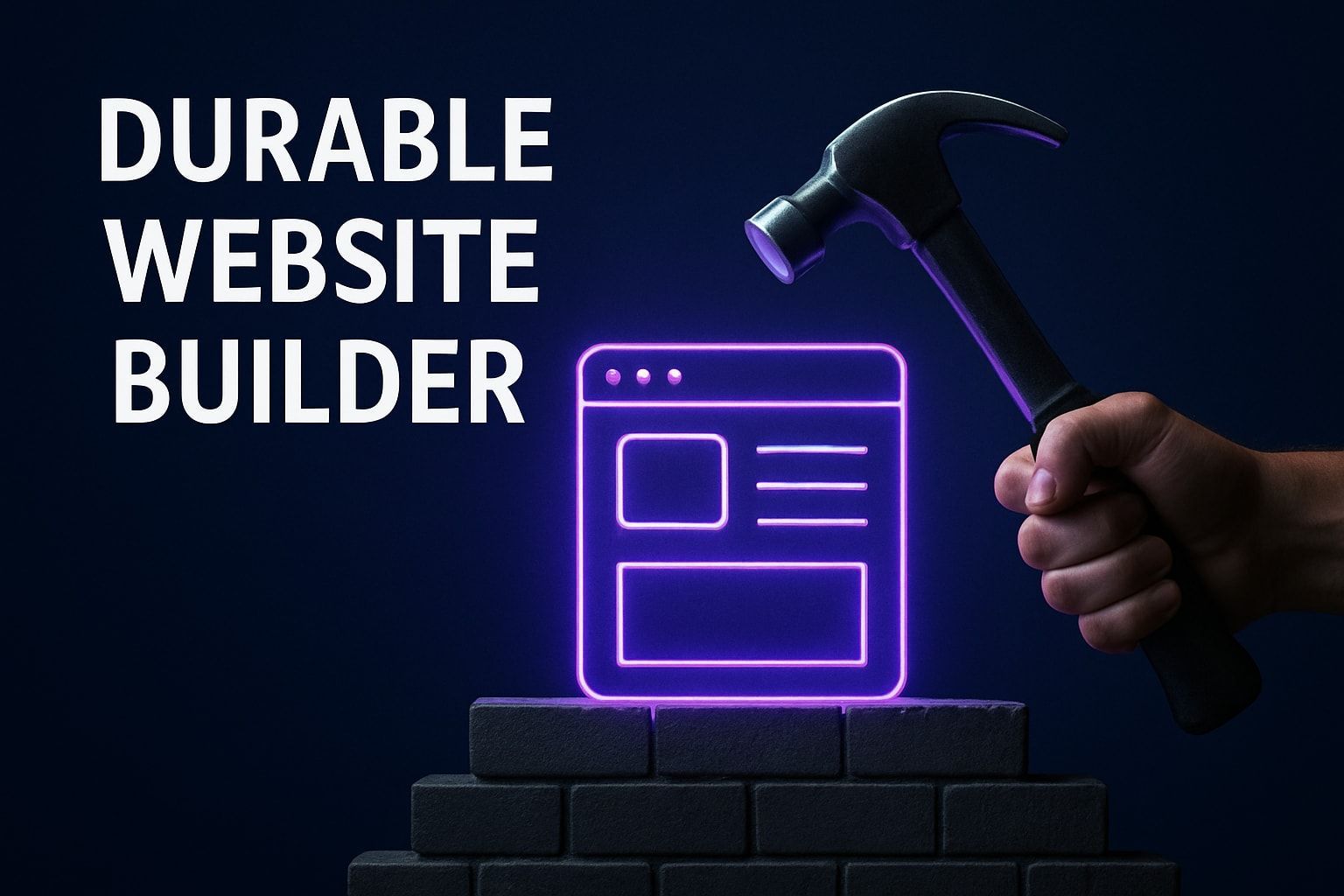Website In Website Guide: How To Embed Sites In 2025
Imagine the power of bringing one website directly inside another, opening up new possibilities for your users and business. The website in website approach is changing how we think about digital experiences in 2025.
From interactive dashboards to booking tools and eCommerce widgets, embedding sites is now a must-have skill for any developer, creator, or business owner. It’s about more than just convenience—it’s about unlocking seamless workflows and innovative user journeys.
In this comprehensive guide, you’ll learn the latest embedding technologies, security best practices, and SEO tips. We’ll break down each step, making the process clear and actionable.
Ready to master embedding for the future? Read on to discover proven strategies, avoid common mistakes, and leverage the newest solutions for top performance.
Understanding Website Embedding: What It Means in 2025
Embedding a website in website experiences is more than just adding a clickable link or redirecting users elsewhere. Instead, it means displaying the content and functionality of one site directly within another, creating a seamless, integrated user journey. This approach lets visitors interact with external tools, apps, or rich media as if they were part of your own platform, without ever leaving your site.
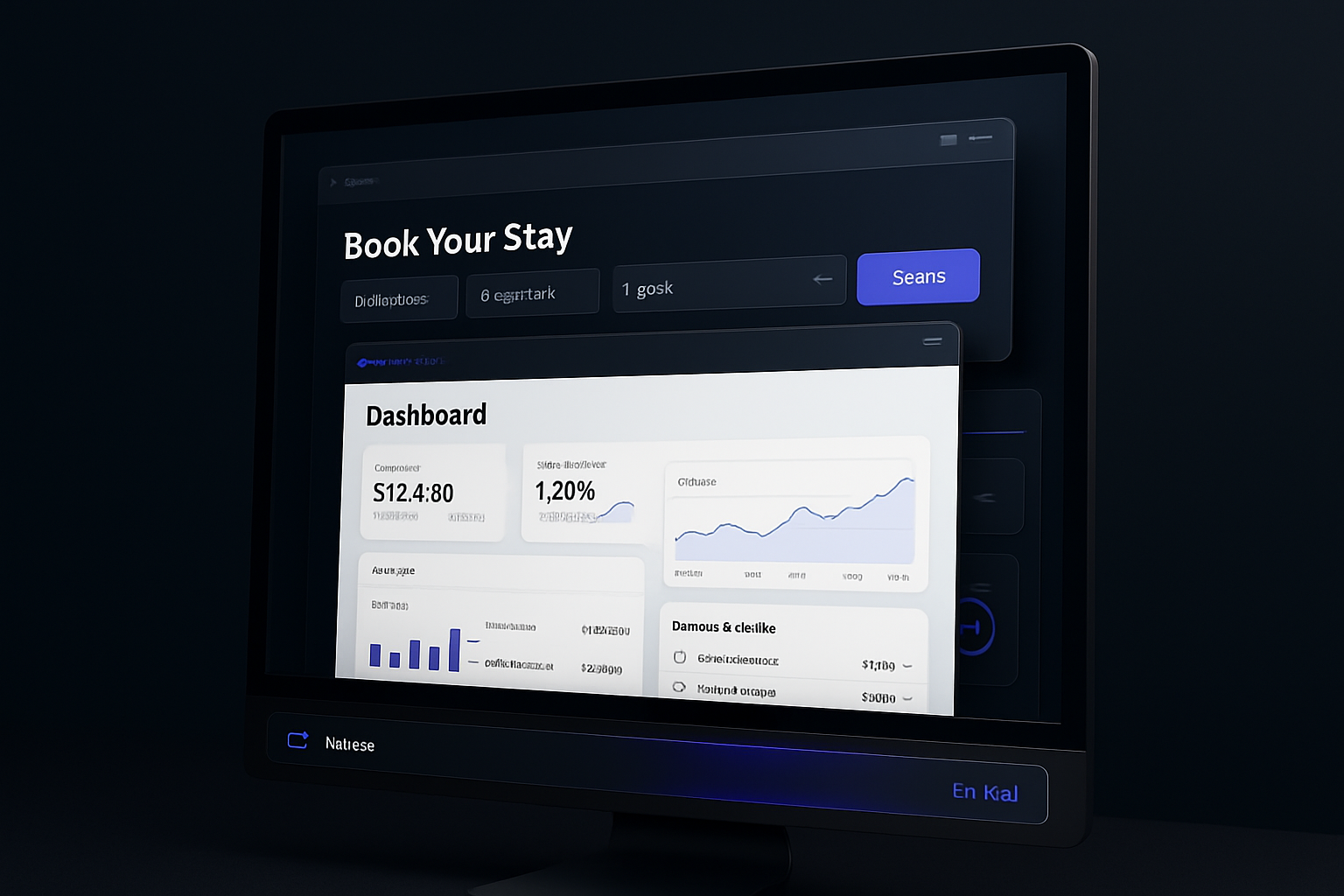
How Website Embedding Has Evolved
The history of website in website functionality stretches back decades. Early solutions like HTML frames and iframes allowed site owners to display external pages inside their own. While iframes remain common, newer technologies such as HTML5 web components, shadow DOM, and JavaScript APIs now offer more flexible, secure, and interactive embedding options.
These modern approaches allow for deeper integration, better styling, and improved performance. Developers can now embed not just static pages, but dynamic apps and real-time dashboards, making the website in website strategy far more powerful for 2025.
Why Embed? Key Use Cases for Website in Website
Businesses, creators, and developers are embedding websites within websites for many reasons:
- Unified user experience: Present third-party tools like booking forms or chatbots without sending users offsite.
- Increased engagement: Keep visitors on your platform with interactive widgets and live data.
- Streamlined workflows: Combine dashboards, SaaS tools, or eCommerce features for a one-stop digital hub.
Common use cases include integrating appointment scheduling, payment solutions, live chat, analytics dashboards, and eCommerce checkout flows. Embedding these tools directly can boost conversions, reduce friction, and keep your brand front and center.
Legal, Ethical, and Technical Considerations
Before embedding any website in website setup, always check permissions, copyright, and terms of service. Not every site allows embedding, and ignoring these rules can lead to legal trouble or broken functionality.
Security is another major concern. Both the parent and embedded sites should use HTTPS and valid SSL certificates to protect user data—especially when handling cross-domain content. Modern browsers enforce strict policies around mixed content and cross-origin requests, so ensuring both sites are secure is essential for a smooth embedding experience.
Prevalence and the Future of Embedding
Today, the website in website approach is rapidly gaining popularity. According to Web Development Statistics 2025, over 60% of business websites now incorporate embedded apps, widgets, or third-party tools. This trend is accelerating with the rise of headless CMS platforms and composable web architectures, which treat every site component as modular and embeddable.
As digital experiences become more connected and interactive, embedding is now a core strategy for delivering flexible, personalized content. Whether you’re building a no-code site or a custom enterprise platform, mastering website in website embedding will be crucial for staying ahead in 2025.
Core Embedding Methods: Pros, Cons, and Best Use Cases
Embedding a website in website scenarios has evolved dramatically, offering flexibility and new capabilities for modern web projects. Let’s break down the core embedding methods, compare their strengths and weaknesses, and match them to the best use cases.
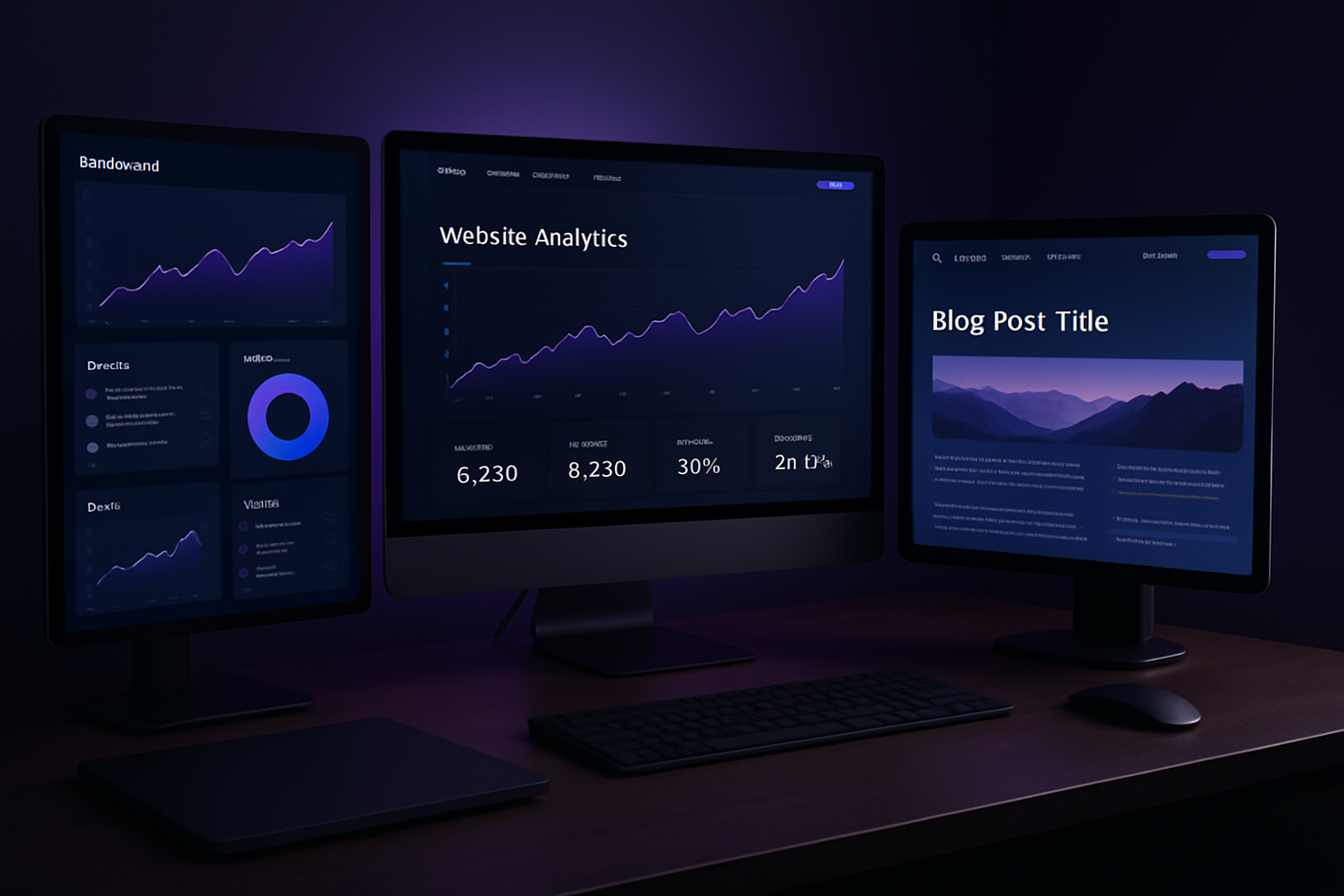
Using Iframes and Frames in Modern Web Development
Iframes are the classic tool for embedding a website in website projects. With simple syntax like
<iframe src="https://example.com"></iframe>
, you can display almost any external page within your own.
Pros:
- Easy to implement and widely supported.
- Works for both static and interactive content.
- Quick to set up, making it a go-to for demos or dashboards.
Cons:
- Responsive sizing can be tricky, sometimes causing scrollbars or layout issues.
- Security risks like clickjacking require careful use of sandbox attributes and headers.
- SEO impact: Search engines rarely index iframe content, so it won’t boost your page’s rankings.
Security Tips: Always use HTTPS, set appropriate sandbox attributes, and configure X-Frame-Options headers. For more on secure iframe usage, see Common Iframe Security Threats.
Example: Embedding a booking app or partner widget to streamline workflows within your site.
When choosing iframes for your website in website integration, balance ease with security and user experience.
HTML5 Embed and Object Tags
The
<embed>
and
<object>
tags offer additional options for embedding a website in website scenarios, especially for multimedia or interactive web apps.
Differences from Iframes:
-
<embed>is best for displaying media (PDFs, video, SVG). -
<object>can be used for both media and HTML content, and allows fallback content.
Browser Support & Limitations:
- Broad support, but with quirks on some browsers.
- Limited interactivity and styling compared to iframes.
- May not handle complex web apps or navigation smoothly.
Example: Use
<embed src="file.pdf">
for documents, or
<object data="app.html"></object>
for simple interactive content.
This method is suitable when your website in website use case involves media files or lightweight interactive elements.
JavaScript-Based Embedding & Web Components
JavaScript-powered techniques are popular for embedding dynamic content and complex apps within a website in website framework.
Methods:
- AJAX and dynamic loading inject third-party tools or content without full page reloads.
- Web components and custom elements allow encapsulated, reusable UI elements.
P
ros:
- Deep integration and control over styling.
- Supports modern frameworks (React, Vue, Angular).
- Enables seamless, app-like experiences.
Cons:
- Increased development complexity.
- Requires ongoing maintenance and dependency management.
Example: Embedding a React-based booking tool that communicates with your site via events.
For advanced website in website setups, JavaScript and web components unlock powerful, interactive solutions.
API and SDK Integrations
Embedding via APIs or SDKs is ideal for a website in website approach when you need robust, supported integrations.
Benefits:
- Tighter integration with provider’s features and security.
- Access to advanced functionality (e.g., authentication, analytics).
- Often includes support and documentation.
L
imitations:
- Reliance on third-party service uptime and API changes.
- Potential costs or usage limits.
Example: Integrating a payment gateway or calendar booking system using their official SDK.
If your website in website project needs secure, feature-rich tools, APIs and SDKs are often the best route.
Server-Side Embedding and Proxy Solutions
Server-side approaches let you embed a website in website content while controlling access and security at the backend.
Use Cases:
- Restrict access to embedded apps behind authentication.
- Rewrite or sanitize embedded content for compliance.
Drawbacks:
- More complex to set up and maintain.
- May impact scalability or require significant resources.
Example: Using a proxy to embed a secure client portal, ensuring only authorized users see sensitive data.
When your website in website needs maximum control and security, server-side embedding is worth considering—especially for enterprise or regulated environments.
Step-by-Step Guide: How to Embed a Website in Your Site in 2025
Embedding a website in website is easier than ever in 2025, but success starts with a clear plan. Here’s a practical, step-by-step guide to help you navigate the process, avoid common mistakes, and ensure your embedded content looks and works great.
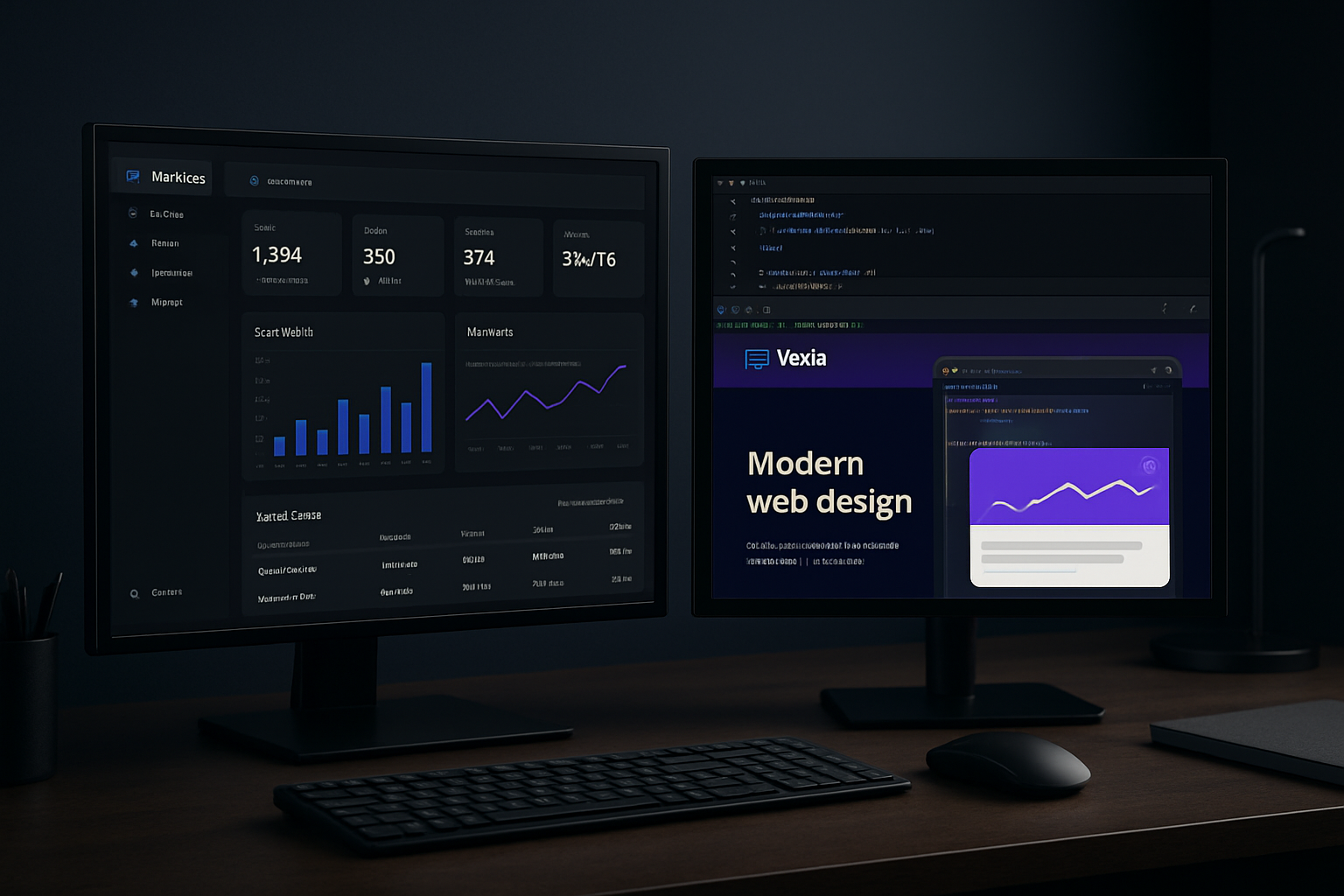
Step 1: Define Your Embedding Goals and Requirements
Before jumping into code, clarify what you want to achieve with a website in website setup. Are you embedding a full site, a single-page app, or just a widget? Knowing your intent shapes every other decision.
Think about how users will move between your main site and the embedded content. Should navigation be seamless, or is a standalone experience better? Consider branding, too—will the embedded content match your site’s look and feel, or stand out as a distinct app?
For example, if you’re embedding an appointment booking tool, decide whether it should appear as a pop-up, a section within your site, or a full-page overlay. These choices impact both design and user experience.
Step 2: Check Permissions, Compliance, and Technical Feasibility
Not every website in website integration is allowed. Confirm you have the legal right to embed the target content. Review the source site’s terms of service, copyright, and privacy policies to avoid legal trouble.
Check technical requirements. Both your site and the embedded site should use HTTPS to prevent browser warnings and ensure secure data transfer. SSL certificates are a must for cross-domain embedding. Also, some sites use headers like X-Frame-Options to block embedding—test your target site before proceeding.
For example, if you’re embedding an external booking platform, both sites must be HTTPS-secured to prevent mixed content errors and maintain user trust.
Step 3: Choose the Right Embedding Method
Selecting the best approach for website in website depends on your goals and the type of content. The main methods include iframes, embed/object tags, JavaScript widgets, and API-based integrations.
Compare methods using a quick table:
| Method | Best For | Pros | Cons |
|---|---|---|---|
| iframe | Full sites, apps | Easy, flexible | Sizing, security |
| embed/object | Media, widgets | Simple, multimedia | Limited features |
| JavaScript/API | Dynamic widgets | Interactive, scalable | Complex, needs JS |
For a dynamic app, a web component or JavaScript SDK may be ideal. For static content or tools, an iframe might suffice. Always consider browser compatibility, future scalability, and the ability to customize style and functionality.
Step 4: Implement the Embedding Code
Once you’ve chosen your method, it’s time to add the website in website code to your page. Here are quick code examples for the most common options:
Iframe:
<iframe src="https://example.com/app" width="100%" height="600" style="border:none;"></iframe>
Embed tag:
<embed src="https://example.com/widget" width="100%" height="400">
JavaScript Widget:
<script src="https://example.com/widget.js"></script>
Adjust width, height, and styles for responsiveness. If your embedded site has its own navigation, decide if you want to allow redirects within the iframe or keep users anchored on your main site. Use CSS to ensure the embedded content blends smoothly with your design.
Step 5: Optimize for Security, Privacy, and Performance
Security is crucial in any website in website scenario. Always use sandbox attributes with iframes to limit what embedded content can do:
<iframe src="https://example.com" sandbox="allow-scripts allow-same-origin"></iframe>
Set a strict Content Security Policy (CSP) and use X-Frame-Options headers to prevent clickjacking. If you’re handling sensitive data, make sure to comply with privacy laws like GDPR and CCPA.
For performance, enable lazy loading and asynchronous script loading. This ensures your main site remains fast, even with heavy embedded content. Secure finance or eCommerce widgets especially require these steps.
Step 6: Test, Troubleshoot, and Monitor
After embedding, thoroughly test your website in website integration across browsers, devices, and screen sizes. Watch for issues like scrollbars, certificate errors, or blocked scripts. Use analytics tools to monitor user engagement and uptime.
Troubleshooting is easier when you know what to look for. Common problems include mixed content errors, navigation issues, or slow loading. For a deeper dive into avoiding typical pitfalls and boosting performance, check out Embedding Mistakes to Avoid.
Keep an eye on updates from both your site and the embedded source to prevent future compatibility issues.
Advanced Embedding Strategies for 2025
As embedding a website in website scenarios becomes more sophisticated, mastering advanced strategies is crucial for seamless integration, robust security, and future-proof performance. Let’s explore the techniques shaping the next generation of embedded web experiences.

Cross-Domain Communication and Integration
Integrating a website in website setups often means bridging cross-domain boundaries. Browsers enforce strict same-origin policies, making direct data exchange between embedded and parent sites challenging.
To enable secure interaction, developers use the
postMessage
API. This allows the parent and embedded site to send messages back and forth without violating browser security. Configuring CORS headers is also essential for API requests, ensuring only trusted origins can access sensitive resources.
Practical use cases include real-time booking confirmations, multi-step authentication, or updating embedded dashboards live. Always validate messages and restrict origins to prevent data leaks or malicious interference.
These techniques transform a static website in website embed into a dynamic, interactive resource that feels truly unified for users.
Responsive and Adaptive Embedding
A seamless website in website experience depends on adaptability across devices. Static iframes often cause frustrating scrollbars or clipped content on mobile screens.
Modern solutions involve JavaScript listeners or libraries like
iframe-resizer
to automatically adjust the embedded content’s size. This ensures the embedded site responds to device changes, maintaining accessibility and a polished look.
- Use
window.postMessagefor parent-child resizing signals. - Set
width: 100%andheight: autoin CSS for fluid layouts. - Test with screen readers and on a range of devices.
Whether embedding booking forms or interactive tools, responsive design is vital. Adaptive embedding means your website in website content looks and works perfectly for every visitor.
Restricting Access to Embedded Content
Not all embedded content should be freely accessible. In a website in website context, you may want to limit usage to authenticated users or prevent direct access to backend tools.
Common strategies include:
- Checking the HTTP referrer to confirm requests originate from the parent site.
- Using signed tokens or session cookies for authentication.
- Implementing robots meta tags like
noindexto keep embedded content out of search engines.
Additionally, configure access control at the server level to block unauthorized entry points. These restrictions protect sensitive workflows, user data, and proprietary content when deploying a website in website model.
Embedding Dynamic and Database-Driven Content
Today’s embedded experiences often require live data, not static pages. Connecting your website in website integration to APIs, headless CMS platforms, or cloud databases enables real-time updates and user-specific content.
For example, embed a product catalog that updates instantly as inventory changes, or a portfolio that filters projects dynamically. Many teams leverage tools like Google Sheets, Airtable, or custom APIs to drive this interactivity.
Want to take it further? Explore AI-powered assistants and smart widgets for embedded web tools—AI assistant for embedded web tools can supercharge your integration and automate user interactions within your website in website setup.
Security, SEO, and Legal Considerations When Embedding Websites
Embedding a website in website experiences opens new possibilities, but it also introduces critical security, SEO, and legal considerations. Skipping these steps can expose your business to risks, harm your rankings, or even violate regulations. Let’s break down what you need to know to embed responsibly and confidently.
Security Best Practices
When you embed a website in website configurations, prioritize security from the start. Use sandboxing attributes on iframes:
<iframe src="https://example.com" sandbox="allow-scripts allow-same-origin"></iframe>
Add strong Content Security Policy (CSP) and X-Frame-Options headers to prevent clickjacking and unauthorized access. Always enforce HTTPS on both the parent and embedded sites. If either site isn’t secured, browsers may block content or expose users to threats. For sensitive use cases—like eCommerce or finance widgets—implement rate limiting and bot protection.
SEO Implications
Embedding a website in website setups can impact both your SEO and that of the embedded content. Search engines generally cannot index content inside iframes, which means the embedded site doesn’t boost your rankings directly. However, duplicate content or poor integration can hurt SEO for both domains.
Use
noindex
tags and robots meta directives where necessary to avoid unwanted indexing. For a deeper dive, review these
SEO considerations for embedded sites to optimize your approach and prevent SEO pitfalls.
Privacy and Data Protection
Handling user data across website in website integrations brings privacy laws like GDPR and CCPA into play. Ensure both sites have compatible privacy policies and provide transparent data collection notices. Never share cookies or session data across domains without explicit user consent. Encrypt all data in transit, and consider Data Processing Agreements (DPAs) with third-party providers.
Legal Risks and Compliance
Before embedding, check the target site’s terms of service and copyright notices. Some providers forbid embedding, or require written permission. Violating these terms can lead to takedown requests or legal action. Always respect licensing agreements, especially when embedding SaaS tools, booking systems, or payment solutions within a website in website scenario.
Preventing Misuse and Ensuring Accessibility
Block direct access to sensitive embedded apps using referrer checks or authentication tokens. Combat clickjacking with
X-Frame-Options: DENY
where appropriate. Use bot protection and rate limits to prevent abuse.
Don’t forget accessibility: embedded content should meet WCAG guidelines for keyboard navigation, screen readers, and color contrast. This ensures your website in website integrations are usable by everyone.
Real-World Example and Case Study
Suppose you embed a third-party booking tool within your website in website. Protect user data with HTTPS, use sandboxed iframes, and add
noindex
to the embedded page to avoid accidental search engine indexing. Regularly audit logs for suspicious activity and update security headers as needed.
In one case, a business embedded a payment widget but neglected to enforce CSP and X-Frame-Options. This exposed users to clickjacking. After updating their embedding method and reviewing SEO impacts, the business improved both security and discoverability.
Mastering these best practices lets you confidently leverage website in website integrations while keeping your users, rankings, and reputation safe.
Future Trends: The Evolution of Website Embedding
The landscape of website in website integration is transforming rapidly as we approach 2025. This shift is driven by the rise of composable and headless web architectures, where embedding is not just a feature but a foundational design pattern. Businesses and creators are rethinking how digital experiences are assembled, using embedded content and tools to provide seamless, unified journeys across platforms.
The Rise of Composable & Headless Architectures
Composable and headless architectures are now shaping the future of website in website design. By decoupling the backend from the frontend, organizations can embed interactive elements, SaaS widgets, or even entire applications with ease. This modular approach means you can assemble a digital experience like building blocks, embedding booking forms, analytics dashboards, or product catalogs from various sources into a single, cohesive site.
This trend is gaining traction across industries, especially as businesses demand agility and scalability. Industry research shows that over 65% of new SMB websites now feature at least one embedded SaaS tool, illustrating how the website in website model is becoming mainstream.
No-Code/Low-Code and the Democratization of Embedding
The democratization of website in website integration is accelerating thanks to no-code and low-code platforms. These solutions empower non-developers to embed external tools, forms, or even entire sites without writing a single line of code. Drag-and-drop interfaces, pre-made connectors, and modular templates make embedding accessible to everyone—marketers, educators, retailers, and more.
If you’re seeking practical solutions, you might explore Website templates for embedding, which offer ready-made structures for integrating content and tools directly within your own site. This approach is reshaping how quickly new features and experiences can be launched, removing traditional development barriers.
Advances in Web Components, Micro Frontends & Cross-App Communication
Modern web components and micro frontend architectures are revolutionizing the website in website experience. Web components encapsulate functionality and styling, allowing you to embed reusable elements—like chatbots, video players, or payment forms—without conflicts. Micro frontends take this further, letting teams develop and deploy independent parts of a site, all embedded within a unified shell.
Cross-app communication is also evolving. Technologies like the postMessage API and custom events enable real-time data exchange between the parent site and embedded content, unlocking richer, more interactive workflows.
AI-Driven Personalization and Dynamic Embedding
AI is set to transform website in website embedding. Machine learning algorithms can personalize which apps, products, or content blocks are embedded for each visitor, based on behavior or preferences. Imagine a travel site embedding a personalized booking widget or a retailer dynamically showcasing relevant products from a partner site, all in real time.
This level of dynamic embedding not only boosts engagement but also opens doors to new monetization and partnership models.
Security, Privacy, and the Road Ahead
As embedding becomes more prevalent, security and privacy are paramount. The future of website in website solutions will see stricter enforcement of HTTPS, advanced Content Security Policies, and robust authentication to protect user data. Regulatory compliance, including GDPR and CCPA, will shape how data flows between embedded apps and host sites.
Looking ahead to 2030, expect website in website integration to become even more seamless, intelligent, and secure. The convergence of composable architectures, AI, and democratized development tools will empower anyone to create rich, interconnected digital experiences—redefining what’s possible on the web.
Appendix: Embedding Checklist and Troubleshooting FAQ
Looking to embed a website in website with confidence? Use this appendix as your go-to resource for a smooth process. Here’s everything you need to double-check, fix issues, and find answers fast.
Comprehensive Embedding Checklist
- Check permissions: Confirm you have legal rights to embed the target site.
- Select the method: Choose iframe, embed, JavaScript, API, or server-side approach.
- Security: Set up HTTPS, review Content Security Policy, and configure X-Frame-Options.
- SEO: Use
noindextags if needed; avoid duplicate content. - Testing: Preview your website in website on all major browsers and devices.
- Monitoring: Track performance, user experience, and uptime with analytics.
Completing this checklist helps ensure your website in website project is secure, compliant, and user-friendly.
Quick-Reference Code Snippets
Here are some common embedding methods for a website in website:
<!-- Iframe Example -->
<iframe src="https://example.com" width="100%" height="600" style="border:0;" sandbox></iframe>
<!-- Embed Tag Example -->
<embed src="https://example.com/app" width="100%" height="600">
// JavaScript Dynamic Embedding Example
const container = document.getElementById('embed-container');
container.innerHTML = '<iframe src="https://example.com"></iframe>';
Troubleshooting Guide
Run into issues with your website in website setup? Try these solutions:
- Sizing problems: Use responsive CSS or JavaScript resizing libraries.
- Certificate errors: Ensure both sites use valid HTTPS certificates. For more on security headers, check this Analysis of HTTP Security Headers.
- Navigation issues: Enable
target="_parent"or handle routing within the embedded app. - Blocked scripts: Review browser console logs for CORS or CSP errors.
- SEO concerns: Use meta tags like
noindexin embedded content.
Resources: Official Docs and Best Practices
- eCommerce website integration tips for embedding eCommerce widgets and checkout flows.
- MDN Web Docs: HTML iframe, embed, and object tags.
- Google Search Central: SEO guidance for embedded content.
- Developer tools: Chrome DevTools, Firefox Inspector.
- Web security best practices for embedding third-party apps.
Example Scenarios
- Embedding an appointment booking tool as a standalone app.
- Adding an eCommerce product widget to your product page.
- Integrating an interactive survey or form into your dashboard.
- Displaying a partner’s website in website for unified navigation.
These scenarios cover the most common real-world uses for embedding.
FAQ: Common Questions about Website in Website
Can I embed any site in my website in website project?
Not always. Check permissions and technical restrictions before embedding.
Will SEO be affected when I use website in website techniques?
Embedded content is often not indexed, but improper use can cause duplicate content or indexing issues.
How do I secure embedded content in a website in website?
Use sandboxing, strong security headers, and HTTPS to protect users and data.
Now that you’ve got a clear understanding of how to embed websites like a pro in 2025—and how powerful and flexible your site can become with the right tools—why not put your new knowledge into action? With Avantiy’s AI-powered website builder, you don’t need to worry about coding or complicated integrations. You can easily create, customize, and embed anything from appointment tools to interactive dashboards, all with a few clicks. Ready to see what’s possible for your business or project?
Start Building Your Website Today and bring your ideas to life in just hours, not weeks.
Start building your new website today
No credit of debit card required start building today



